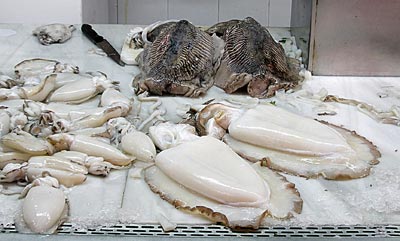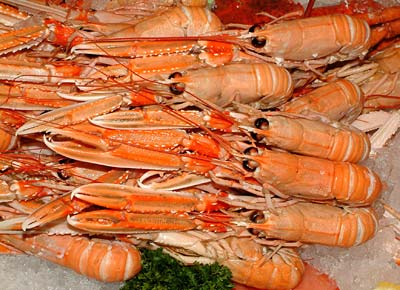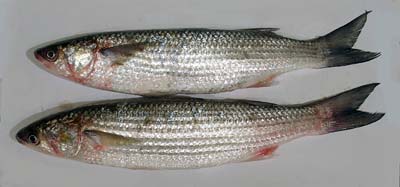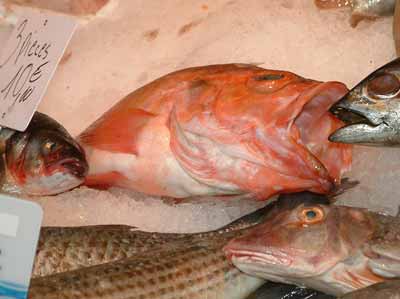
Cuttlefish. A cephalopod related to the squid. The flesh of the cuttlefish is meatier and has a more complex flavour. Both the cuttlefish and the squid have an ink sac. The liquid it contains can be used in the cooking process but it should be added towards the end or it will coagulate. The ink of the cuttlefish is generally felt to be richer, denser, smoother than that of the squid.

Dublin Bay prawns. Norway lobsters. These are like small, elongated lobsters, pale pink when cooked, with long, narrow claws and a delicious flavour.
Golden grey mullet. A fish from the grey mullet (US: striped mullet) family. It has gold spots on its head and at the front of the body.
Thin-lipped grey mullet (US: striped mullet). It has a pointed snout giving it the appearance of thin lips, hence its name. It has a golden sheen.

Grey mullet, the commonest and largest of the grey mullet (US: striped mullet) family. It is a silver, shoal-living fish pointed with dark grey which feeds on seaweed and plankton near the muddy bottom in estuaries and coastal waters. This can effect its flavour. However, a good grey mullet, caught in clean water, is round-bodied and has creamy white flesh and good flavour with good keeping capabilities. It must be thoroughly scaled before eating. Varieties are found all over the world. The roe is used for taramasalata, botargo, boutargue.

Rascasse. Red scorpion fish. A fish similar to a gurnard, mainly red or orange in colour, with a huge, ugly head and poisonous spiny dorsal fins. The large scaly head is inedible. However, this well-flavoured fish is most famous as an indispensable ingredient of bouillabaisse. It is found in deep waters throughout the Mediterranean and as far north as Brittany. Large fish may be baked, providing firm white flesh.